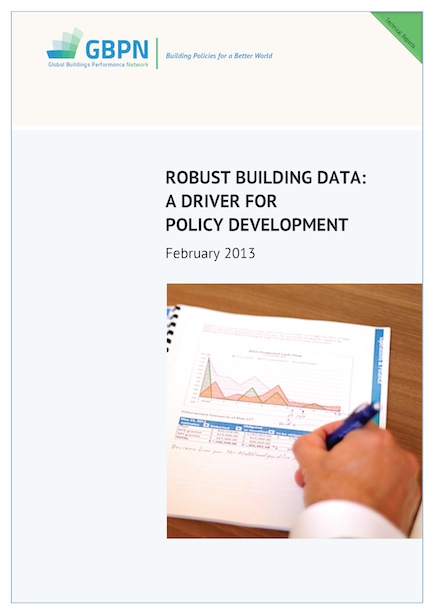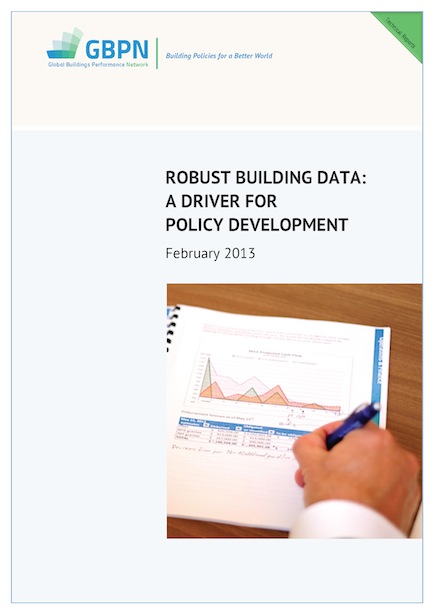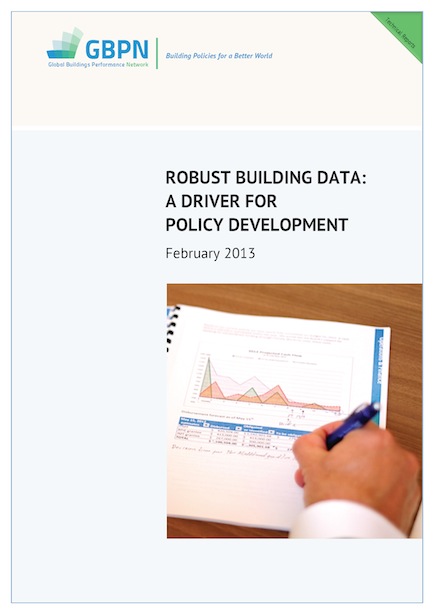印度建筑的减排潜力
 可靠证据表明,至2050年印度建筑领域会产生巨幅能源增长,基于此估测,本报告分析了印度目前建筑节能减排的政策框架及其节能潜力。
可靠证据表明,至2050年印度建筑领域会产生巨幅能源增长,基于此估测,本报告分析了印度目前建筑节能减排的政策框架及其节能潜力。
23 result(s) found
 可靠证据表明,至2050年印度建筑领域会产生巨幅能源增长,基于此估测,本报告分析了印度目前建筑节能减排的政策框架及其节能潜力。
可靠证据表明,至2050年印度建筑领域会产生巨幅能源增长,基于此估测,本报告分析了印度目前建筑节能减排的政策框架及其节能潜力。
 本报告就四个地区数据质量和数据的可利用性问题进行了分析,同时也提醒了我们需要完成多少工作才能建成一个强大而全面的建筑数据库,并提出了实现这个数据库的可行性建议。
本报告就四个地区数据质量和数据的可利用性问题进行了分析,同时也提醒了我们需要完成多少工作才能建成一个强大而全面的建筑数据库,并提出了实现这个数据库的可行性建议。
 本报告就四个地区数据质量和数据的可利用性问题进行了分析,同时也提醒了我们需要完成多少工作才能建成一个强大而全面的建筑数据库,并提出了实现这个数据库的可行性建议。
本报告就四个地区数据质量和数据的可利用性问题进行了分析,同时也提醒了我们需要完成多少工作才能建成一个强大而全面的建筑数据库,并提出了实现这个数据库的可行性建议。
 Data Annex
Data Annex
Discover where things stand regarding building energy data quality and availability in our four regions, this report reminds us of how far we have to go before a robust and comprehensive set of building data is in place and provides some recommendations of how we can get there.
 The Economist Intelligence Unit (EIU) report "Achieving scale in energy-efficient buildings in India: A view from the construction and real estate sectors" commissioned by the GBPN explains the challenges and opportunities of investing in energy efficiency in buildings in India.
The Economist Intelligence Unit (EIU) report "Achieving scale in energy-efficient buildings in India: A view from the construction and real estate sectors" commissioned by the GBPN explains the challenges and opportunities of investing in energy efficiency in buildings in India.
 A report from the Economist Intelligence Unit (EIU), commissioned by the GBPN finds that while India’s commercial building sector has blazed the energy-effiency trail in the building sector, achieving significant scale will depend on efficiency measures becoming standard practice in the commercial middle market, retrofit and, particularly, the residential building segment.
A report from the Economist Intelligence Unit (EIU), commissioned by the GBPN finds that while India’s commercial building sector has blazed the energy-effiency trail in the building sector, achieving significant scale will depend on efficiency measures becoming standard practice in the commercial middle market, retrofit and, particularly, the residential building segment.
 Executive Summary
Executive Summary
GBPN conducted a study on the factors affecting the use of ESCO models for the retrofit of existing buildings in China, identifying current barriers to the development of the Chinese ESCO market, while also researching best-practice examples of ESCOs globally and investigating the feasibility of introducing those examples to China.
In order to achieve long-term targets for energy savings and emission reductions, substantial savings will be needed from existing buildings. For example, a recent analysis for the USA examines aggressive strategies to cut carbon emissions in half by 2040 and finds that in order to achieve this emission reduction target, more than half of existing buildings will need comprehensive energy efficiency retrofits. Germany is targeting an overall primary energy consumption reduction of 50% in 2050 including increasing building renovation rate to 2% per year.
There is now widespread recognition in the international community that the commitments made by national governments under the Paris Climate Agreement in 2015 cannot be achieved without concerted action by cities. Fortunately, many mayors have shown strong commitment to tackling climate change and a willingness to collaborate to achieve this goal.
Key messages 1. The Buildings sector of today has an oversized ecological footprint. The buildings sector is the single largest contributor to global greenhouse gas emissions (GHG), with approximately one third of global energy end use taking place within buildings. Furthermore, the construction sector is responsible for more than a third of global resource consumption, including 12 per cent of all fresh water use and significantly contributes to the generation of solid waste, estimated at 40 per cent of the total volume.
This paper outlines the approach and the cost-effectiveness potential for designing and retrofitting residential buildings to be energy-efficient in Bahrain. The analysis is focused on residential buildings since these buildings consume over 48% of the total electricity used in Bahrain. The optimization analysis has the benefit to assess both at the individual building and the national building stock levels, the potential of the application of currently proven measures and technologies to improve the energy efficiency of the building sector in Bahrain.
Energy Efficiency Retrofit (EER) of existing buildings is a key program for improving building energy efficiency in northern regions of China. This paper presents a methodological framework to conduct an economic cost-benefit analysis for EER projects, based on the calculation of costs and benefits over life cycle. By conducting a case study of a retrofit project located in Huixin Western Street Residential Area, Beijing, China, this research empirically examines its economic sustainability.
This report is the first report of the ‘Energy Savings 2030’-project which seeks to help the Coalition for Energy Savings to produce a robust and timely input to the 2030 policy discussion. It brings together and summarises recent empirical evidence on costs and benefits of energy efficiency measures. The evidence gap in terms of reliable ex-post data is well known. In the majority of cases results from ex-ante modelling studies inform the debate. The research carried out for this report confirms the persistent gap in publicly available ex-post evaluations of energy efficiency programmes.
Global warming and environment problems caused by the excessive emission of greenhouse gases (GHGs), along with rapid economic development has attracted the attention of many countries and regions of the world. Reducing GHG emissions is essential to mitigate the threat of global warming. Household carbon (dioxide) emissions have been recognized as one of the most important contributors to climate change, with a significant impact on both the local and global environment, and various policy instruments have been implemented by governments to bring about the reduction.
This chapter examines the experience of construction unions and community organizations as they enter into strategic alliances to create new markets in energy efficient systems. I focus on two recent policy initiatives: PlaNYC for the retrofitting of public and commercial properties in New York City, and Green Jobs/Green New York (GJ/GNY) for the retrofitting of non-commercial residential properties in the rest of the city and the state.
This paper evaluates the economic, environmental, and social benefits of large-scale energy efficiency programs for new and existing buildings in Qatar. Using data obtained from detailed energy audits, several proven energy efficiency measures have been analyzed through optimized based analysis to assess their impact on the energy performance for both new and existing buildings in Qatar. Moreover, a bottom-up analysis approach is considered to quantify the multiple benefits for implementing large-scale building energy efficiency programs for the building stock in Qatar.
We report on an original systematic review of 165 empirical, ex post studies examining policies that promote the development and use of low-carbon technologies. Policy is defined broadly to include diverse instruments (e.g., eco-labels, voluntary agreements, emission credits, and taxes), developed, administered, and promoted by state and non-state actors (e.g., cities, states, corporations, business associations, and non-governmental organizations) that are relevant to climate change.